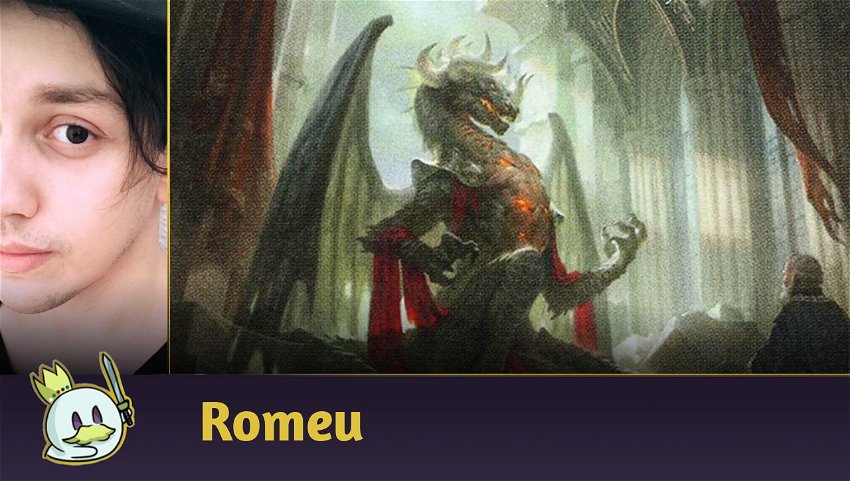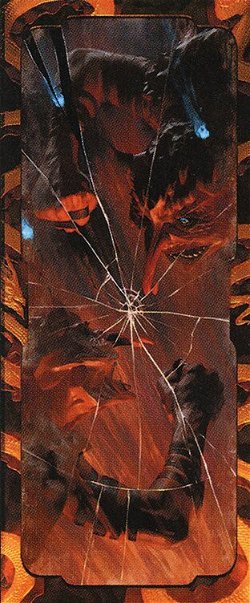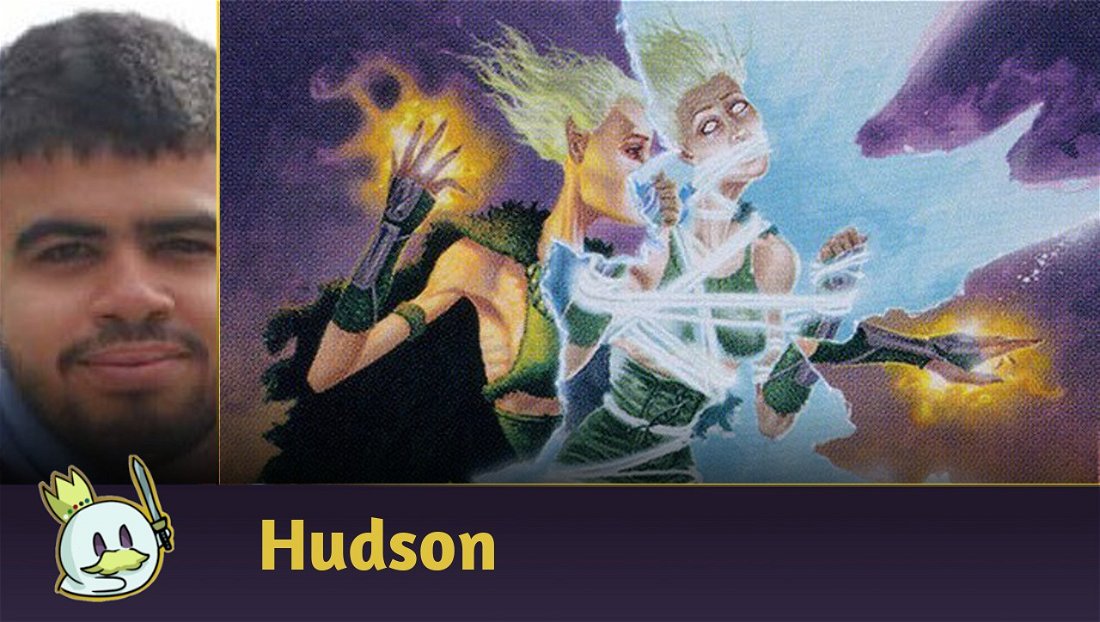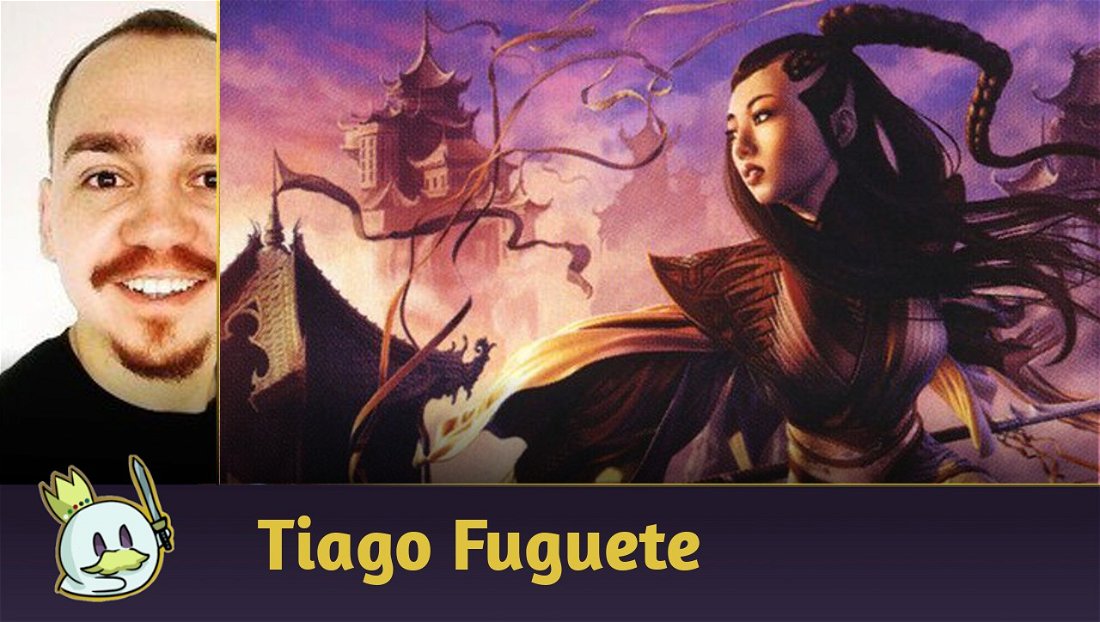Last week I presented an article where I explained how to play with Rakdos Midrange and why it has established itself as the best deck in the format.
However, during my games and as I explained in the Sideboard Guide, a matchup that proved to be unfavorable was Jund Food because it managed to play "on top" of Rakdos without being easily caught by the other decks and/or without having some perfect alignment of spells, as is the case with Omnath, Locus of Creation or Niv-Mizzet Reborn lists.
Ad
So today, we're going to delve deeper into Jund Food, which, I think, is the best way to fight Rakdos Midrange today.
The Decklist
It is essential to note that Explorer's "Jund Cat-Oven" archetypes fall into three categories: Jund Sacrifice, Jund Food and Jund Karn.
Jund Sacrifice is characterized by playing around casting Bolas's Citadel quickly to perform a pseudo-combo kill with Mayhem Devil. It tends to play with a lower mana curve, has plenty of mana dorks like Prosperous Innkeeper and Llanowar Elves and tends not to care so much about interacting with the opponent or accumulating value — you cast the Citadel and, from then on, you have all the value you need, or you win the game on-spot.
Jund Food is a Midrange that features the Sacrifice base interactions (Cauldron Familiar, Witch's Oven and Mayhem Devil) alongside a Ramp and Card Advantage core that interact absurdly with Trail of Crumbs, an enchantment that allows for an absurd and recurring card selection — comparable to Sylvan Library — if you meet the requirements, something effortless for a list that has Gilded Goose and Witch's Oven. It manages to outplay traditional Midranges by accumulating more value than them through micro-interactions, especially with Korvold, Fae-Cursed King.
Finally, Jund Karn is a variant of Jund Food that chooses to have access to a gigantic toolbox with Karn, the Great Creator, allowing access to Sideboard cards in Game 1, such as Soul-Guide Lantern or Unlicensed Hearse against Greasefang, or Pithing Needle against Planeswalkers, as well as serving as extra copies of Witch's Oven and Oni-Cult Anvil. It's usually in attrition Metagames and/or when Greasefang, Okiba Boss decks or the mirror match are high, as Karn "locks" the activated abilities of opposing artifacts.
Here, I'm emphasizing Jund Food, as currently, it seems like the best option against the Metagame, and this is the list I've been running on Magic Arena ranked:
As you can see, it follows a pattern of what you find in most events, but even in a common decklist, we have a game changer in the choices, and it depends exclusively on which route you want to take and which Metagame you expect - choosing between Oni-Cult Anvil and The Meathook Massacre.

In an overview, each of them has pros and cons as the format adapts:
Oni-Cult Anvil interacts remarkably well with Food tokens, collaborates with Mayhem Devil and Korvold, Fae-Cursed King triggers, and adds more redundancy to Jund Food's already well-powered sacrifice machine, increasing the long-term accumulated value.

One of the perks of having Oni-Cult Anvil over The Meathook Massacre is the ability to add Jegantha to your Sideboard as a companion, increasing the actions available in late-game.
The Meathook Massacre, on the other hand, works as an extra payoff for Cat-Oven interactions while also being a mighty sweeper against Aggro and also clearing the board of any Midrange on later stages — never being a dead card under absolutely no circumstances.
Ad

The good thing about having not to turn to Jegantha, the Wellspring for not meeting the Companion requirements due to The Meathook Massacre is that you gain more flexibility in the cards you can run in the maindeck and on the sideboard.
My personal consensus is that choosing between one or the other depends on what you intend to face. In the current Metagame, I prefer The Meathook Massacre since we have many Aggro decks and the X-for-1 offered by the enchantment is also relevant against Midranges. If there is a moment where we have a growth of Control or Mirror matches, Oni-Cult Anvil might become more relevant, as it offers more bodies and more triggers without directly depending on other cards.
Maindeck

These three cards are the reason why Sacrifice strategies are viable in Explorer/Pioneer, and you shouldn't play with less than four copies of each.
Cauldron Familiar is your recurring blocker that greatly delays the amount of damage the opponent can do to you, in addition to being extremely difficult to deal with even against maindeck hates like Graveyard Trespasser — being also our most consistent win condition.
Witch's Oven is what makes Cauldron Familiar good because it's with the interaction between the two (you can sacrifice Familiar to create a Food token and sacrifice a Food to return the Familiar to the battlefield) that you extract value with the rest of the deck.
Mayhem Devil is the main payoff for the Cat-Oven interaction. It doubles the speed at which you can win the game while also functioning as a gigantic crowd control — killing small creatures and Planeswalkers merely by staying in play.

To complement the strategy, speed up our mana and offer us extra tokens late-game, we have Gilded Goose as the best mana dork available for this archetype, in addition to Trail of Crumbs as a means of maintaining and accumulating new resources with each sacrificed Food token.

Fable of the Mirror-Breaker is a multi-deck staple and interacts incredibly well with Jund Food: It accelerates mana with the Goblin token (which conveniently creates Treasures that need to be sacrificed to generate mana), it helps to filter the bad pieces from our hand and Reflections of Kiki-Jiki can copy important creatures or serve as a source of extra sacrifice, being particularly brutal when copying Mayhem Devil.
In addition to the enchantment, and with so many artifacts, creatures, and the benefits of sacrificing things, Deadly Dispute is one of the best draw spells available for Sacrifice decks and also helps to speed up Korvold's cast, which does a bit of everything: it's a wincondition, the most powerful card advantage engine on the list, and it's extremely hard to kill at Instant-Speed on most archetypes out there today.
Ad
Normally, if you untap with Korvold, Fae-Cursed King, you've probably won the game by stacking 3 or more cards every turn.

Sacrifice is most likely the best Fatal Push deck in the format right now, as we have no problem triggering Revolt and killing pretty much any of the format's top creatures for just a single mana.
The Meathook Massacre is a necessity in a format that has been dictated by favorable board positions from the aggressive archetypes or constant 2-for-1 trades from the Midranges, functioning as a sweeper as well as part of our wincondition in a permanent type from which it is not so common to have maindeck removals against.

A three-color mana base in Explorer is not an easy task to manage, and I'm still working on the ideal numbers of lands, but I don't like the configuration with excess Pathways because there are situations where having them as the only options in the starting hand are extremely punitive in the medium term.
I'm resorting to a single copy of Ziatora's Proving Ground just to add extra redundancy in a land that has an additional effect besides being played, but it can be a problem when it comes to turns where you need to tapout to cast a Korvold or The Meathook Massacre.

We also have some utilitarian lands, especially Boseiju, Who Endures to deal with occasional graveyard hates that we might find in someone else's Maindeck.
Sideboard

It is natural for our opponents to add graveyard hate pieces and artifact removals to deal with our game plan. So, I've added some answers against these spells that also double as cheap removals against creature decks that, despite being favorable games, can be a mess if we fail to assemble our engine while they snowball us.
I also added an extra copy of Boseiju, Who Endures to deal with Rest in Peace or any other problematic permanent so that I could just swap a land slot for it.

Graveyard decks are still important in the format, especially Greasefang, Okiba Boss, so we need good Instant-Speed answers to deal with them.
I don't really like Soul-Guide Lantern these days, even though it collaborates in interactions with Korvold and Mayhem Devil, I believe we need something that goes a little beyond the usual hate and makes it difficult for the opponent to play around and Unlicensed Hearse is a great option in this regard.
Riveteers Charm is something I've been testing since I put this list together, and it never left my Sideboard. If it weren't for its greedy mana cost, I would definitely consider adding more copies as it is extremely versatile: It's an instant-speed graveyard hate, a pseudo "draw 3" and a compelling removal against Planeswalkers or larger creatures.
Ad

With the absence of Jegantha, the Wellspring, I added two copies of Chandra, Torch of Defiance for the attrition and Control games, and she does an excellent job as removal and wincondition on a single card — and conveniently escapes the biggest threat Azorius Control has against us, Farewell.
Thoughtseize is required for the following occasions: dealing with excess dedicated hate, playing around counterspells and removing combo pieces. I don't side it in as many times as four copies require, but it's essential in games where we want it.
Mulligan and Postures
Mulligan
When it comes to Jund Food, there is no specific example of a perfect hand — although those that include Witch's Oven and Cauldron Familiar are preferable — and instead, what matters is if your hand actually has a plan.
As already mentioned, a hand with Cat-Oven is preferable, but others that include Trail of Crumbs and Deadly Dispute in addition to Gilded Goose to generate value in the medium term are also acceptable to find the remaining pieces.
The point is that you don't need to be afraid to mulligan with this deck because it has so many ways to bounce back if you have the right interactions. So, what really matters is having access to them during the first few turns and then finding what's left with Deadly Dispute and Trail of Crumbs.
Posture
Despite being a Midrange, Jund Food isn't the deck where you prioritize interaction: you want to do your things and extract value from them to bury your opponent in card advantage — your interaction will basically come from targeting with your Mayhem Devil triggers and removals while managing your resources.
So, especially in Game 1, you need to be proactive and set up your engine before your opponent runs over you — an easy task when you have so many lifegain effects with Food and Witch's Oven — and only afterward you will care about deciding how to handle X or Y situations that present themselves on a game. If you fail to do this for any reason, you'll most likely lose.
This changes in post-sideboard games because you're mostly forced to interact— especially against decks that are more flexible and/or can hit the "free-win" button as your clock is too slow for you to just execute your plan.
In these cases, we abdicated the stance of the first game in favor of acting closer than a traditional Midrange does, where you adapt to the game situation and become more proactive or reactive as needed.
Tips and Tricks
The main tip I can give you about this or any other Cat-Oven archetype is that it requires plenty of clicks, and that makes games time-consuming. Have patience when piloting this deck, so you don't end up missing opportunities with each trigger.
Cat-Oven's combo can rack up damage very fast in the presence of one or two copies of Mayhem Devil and/or The Meathook Massacre, and it's pretty easy, with a list that requires so many clicks and micro-interactions, to end up losing count of how much damage you can deal in a single turn - take your time to do the math.
Ad
There are a number of things you can do when in Full Control mode and retain priority: triggers like The Meathook Massacre or Korvold, Fae-Cursed King, for whatever reason you have, can be answered before they resolve. You can also sacrifice multiple Food tokens to a Cauldron Familiar in your graveyard to have multiple Mayhem Devil or Korvold triggers.
If you have to choose one of several one-drops to play on turn 1, my priority is usually Gilded Goose (it allows for Fable of the Mirror-Breaker on turn 2). If I have to choose between Cauldron Familiar and Witch's Oven, I choose the artifact because I want to avoid losing it to a Thoughtseize on turn 1.
Despite the good results, I consider this one of the worst and most exhausting decks to pilot in Magic Arena. There's a lot that you need to pay attention to master it, and do the step by step of each one of its effects becomes tedious and tiring after a few rounds as we lack the shortcuts that would be possible in a Tabletop event, making the matches more tiresome than we would really like. So remember to rest and relax your mind before moving on to the next game.
Sideboard Guide
Rakdos Midrange
IN:

OUT:

The match against Rakdos is relatively good as we have great blockers for their creatures and our removals are decent too, plus we have ways to get constant card advantage for a small amount of mana — it all adds up to the point where we reach inevitability through the recurring damage caused by our interactions. Our biggest concern are the Planeswalkers. So focus on them with Mayhem Devil triggers.
We removed Mayhem Devil post-side because it doesn't offer a good crowd control in this match, as well as being an easy target for the multitude of opponents' removals, while Fatal Push isn't as useful in dealing with creatures when we bet on chump-block and lifegain to hold back aggression.
We've adopted a package that allows us to play even more for value with decent Planeswalkers and removals. Assassin's Trophy should focus on the opponent's hate, but don't be afraid to use it to kill a Planeswalker. Likewise, Riveteers Charm gives you more card advantage in late-game, but your main goal is to deal with their curve-topper (whether it's Chandra, Sorin, or Glorybringer).
Mardu Greasefang
On the Play:
IN:

OUT:

On the Draw:
IN:

OUT:

Ad
Game 1 is a bit difficult, as we rely on the interaction between our removals to deal with Greasefang, Okiba Boss, and we don't have as many ways to find a Fatal Push since Trail of Crumbs cannot hit it. In this case, we need to keep it to deal with the main combo pieces, or always leave three Mayhem Devil triggers available (meaning a Cat-Oven loop and any sac outlet) to kill their rat.
That said, between Cauldron Familiar's lifegain and Food tokens, in addition to Gilded Goose block, we have the means to mitigate the damage if we can't deal with Greasefang or Parhelion II for a turn. The only problem is that our clock is too slow to turn the game if they close the combo more than once.
This is a matchup where, post-sideboard, we have the advantage on the Play because we can care more about the battlefield and less about their resources. We want to avoid wasting spells and tapping out, so we took out some heavier or less useful pieces for more removals and graveyard interactions.
On the draw, we are forced to try a more proactive interaction as they can close the combo much faster than we can handle it, so we bet on adding four Thoughtseize to delay them long enough for us to stabilize the game.
It's important to note that they will likely have some answer against artifacts in Games 2 and 3. So be cautious with Unlicensed Hearse, always focus on at least removing one Parhelion II from their graveyard, or forcing them to lose a turn dealing with your vehicle and then perform the combo (which will give more time to find another answer when necessary).
Mono Blue Spirits
IN:

OUT:

Almost every matchup against Aggro is favorable for Jund Food because The Meathook Massacre and Mayhem Devil do an impressive job on killing threats, while Gilded Goose and Cauldron Familiar offer a precious lifegain.
Against Spirits, as long as the opponent doesn't close an absurd curve that includes Curious Obsession, we have the advantage in the game as long as we keep the lords off the board.
Post-Sideboard, we side out Korvold since we don't want to tapout just to lose it to Geistlight Snare or Aether Gust, while also removing Fable of the Mirror-Breaker as it does too little in this match and the Goblin token is an easy target for any bounce.
Mono Red Aggro
IN:

OUT:

Mono-Red Aggro is another extremely favorable game and there's not much to worry about in it: as long as you keep the board empty, the opponent's main threat (Embercleave) won't have enough impact on your game plan. I just recommend having a Fatal Push ready in case the opponent casts it at an inopportune moment, or to deal with Torbran, Thane of Red Fell.
There aren't many surprises in Games 2 and 3, but we cut Fable of the Mirror-Breaker since it doesn't have enough impact against Aggro, while adding more removals to control them and deal with the occasional hate. Your biggest enemy here will probably be Rampaging Ferocidon, but we can handle it easily.
Ad
Azorius Control
IN:

OUT:

Azorius Control presents a challenging but well-balanced match where we rely exclusively on non-combat damage to slowly win the game.
Game 1 is a bit weird as both players have a bad card streak against each other. Don't be afraid to cast The Meathook Massacre on turn 2 because the enchantment will boost your clock and hardly have any other use than that.
Post-Sideboard, we have too few targets for our removals and I particularly prefer to side out Gilded Goose since this isn't a game where it makes a lot of sense to have an early-game ramp, and it's a terrible top deck if compared to the other cards on the list.
We've added interactions like discards and removals against Planeswalkers, as well as effects that allow us to extend the game and gain card advantage and maintain resource parity.
Although we don't care about sweepers, your biggest enemy in this match are spells that can ruin your game plan, like Farewell, so prioritize removing it with Thoughtseize since any other card is unlikely to cause as many problems as it does.
Conclusion
Jund Food is one of Explorer's top contenders today and one of the few archetypes that demonstrates a strong and consistent setup enough to have a positive match against Rakdos Midrange and other creature-oriented archetypes.
Its weaknesses are Combos and strategies that can play over it, like Big Mana or Control. But as these decks are currently low or almost non-existent, I believe it is in a good place in the current competitive landscape.
Thanks for reading!









— تعليقات0
كن أول من يعلق